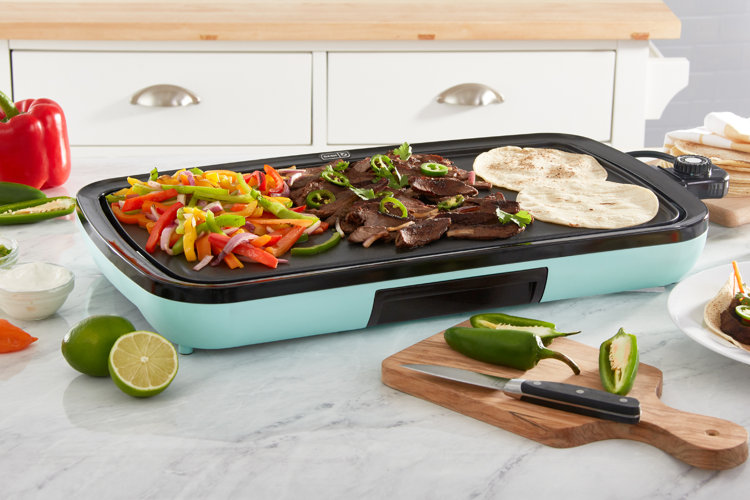How to Season Griddle Tools for Perfect BBQ Performance
Written By James Morgan
For any barbecue enthusiast, the art of grilling extends beyond just flipping burgers and searing steaks. It involves a deep understanding of the tools and techniques that enhance the flavor and quality of the food. One essential aspect of achieving that perfect cookout is knowing how to season griddle tools. Proper seasoning of your griddle equipment not only ensures a non-stick surface but also imparts a unique flavor to your food, making every barbecue a memorable experience.
Seasoning griddle tools is a crucial step that should not be overlooked. It involves more than just a quick wipe down with oil. This process helps create a protective layer that guards against rust and enhances the longevity of your tools. In this article, we will delve into the step-by-step process of seasoning your griddle tools, ensuring they are in peak condition for your next barbecue. Whether you're using a cast-iron or griddle spatula, these tips will help you get the most out of your griddle experience.

Understanding the Importance of Seasoning
Before diving into the seasoning process, it's important to understand why it's necessary. Seasoning creates a non-stick surface on the griddle tools, which is essential for cooking delicate foods like fish and pancakes without them sticking. Additionally, it helps in developing a rich patina over time, which enhances the flavor of the food. This patina also acts as a protective barrier against rust and corrosion, ensuring the longevity of your tools.
For those who regularly use their griddle for various cooking styles, seasoning is an ongoing process. Each time you cook, the oils and fats from the food contribute to the seasoning layer, improving the non-stick capabilities and flavor depth of your tools. If you're unsure about which griddle tools to start with, you can explore different options at Made In Cookware.
Step-by-Step Guide to Seasoning Griddle Tools
1. Gather Your Materials
Before starting the seasoning process, ensure you have all the necessary materials. You will need:
- Griddle tools (spatulas, scrapers, presses)
- Cooking oil (vegetable, canola, or flaxseed oil)
- Paper towels or a clean cloth
- A heat source (stove or grill)
Having these materials ready will streamline the process and ensure you can complete the seasoning without interruptions.
2. Clean Your Tools
Start by thoroughly cleaning your griddle tools. Use warm, soapy water to remove any manufacturing residues or previous food particles. Rinse them well and dry completely with a towel. It's crucial that the tools are dry before proceeding, as moisture can interfere with the seasoning process.
3. Apply Oil
With your tools clean and dry, it's time to apply the oil. Pour a small amount of your chosen oil onto a paper towel or cloth, and rub it evenly over the entire surface of each tool. Be sure to cover all areas, including the edges and handles, to ensure a uniform seasoning.
4. Heat the Tools
Once the oil is applied, it's time to heat the tools. Place them on your heat source and allow them to heat up gradually. The goal is to reach a temperature where the oil begins to smoke slightly. This smoking indicates that the oil is bonding to the metal, creating the desired non-stick layer.
Keep the tools on the heat for about 20-30 minutes, then remove them and let them cool. Repeat this process 2-3 times to build up a robust seasoning layer. If you're using a griddle scraper, you can also apply these techniques to maintain its efficiency.
Maintaining Your Seasoned Griddle Tools
Once you've seasoned your griddle tools, proper maintenance is key to preserving their non-stick properties. After each use, clean them gently with a soft sponge or cloth, avoiding abrasive scrubbers that can damage the seasoning layer. Dry them thoroughly before storing to prevent rust.
Regular re-seasoning is also advisable, especially if you notice any signs of rust or if the non-stick surface diminishes. Simply follow the same steps as outlined above to refresh the seasoning layer.
Additional Tips for Barbecue Enthusiasts
For those passionate about grilling, experimenting with different oils can add unique flavors to your cooking. Flaxseed oil is particularly popular due to its high smoke point and ability to create a durable seasoning layer. Additionally, investing in high-quality griddle tools, such as those recommended by the RTA Outdoor Living, can enhance your grilling experience.
If you're new to griddling and want to learn more about using specific tools, check out our guide on griddle choppers versus scrapers, which offers insights into choosing the right tool for your needs.

Frequently Asked Questions
What is the best oil to use for seasoning griddle tools?
While various oils such as vegetable, canola, and flaxseed oil can be used, flaxseed oil is often preferred for its high smoke point and ability to create a durable seasoning layer.
How often should I season my griddle tools?
The frequency of seasoning depends on usage. For frequent use, re-seasoning every few months is recommended to maintain the non-stick surface and protect against rust.
Can I use my griddle tools immediately after seasoning?
Yes, once the tools have cooled after the seasoning process, they are ready for use. The seasoning will improve with each use as oils from cooking continue to bond with the tools.
For more comprehensive maintenance tips, you may find this NY Times Guide helpful.
This article contains affiliate links. We may earn a commission at no extra cost to you.



